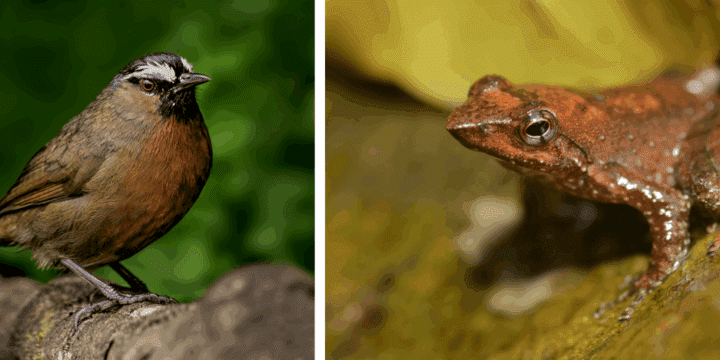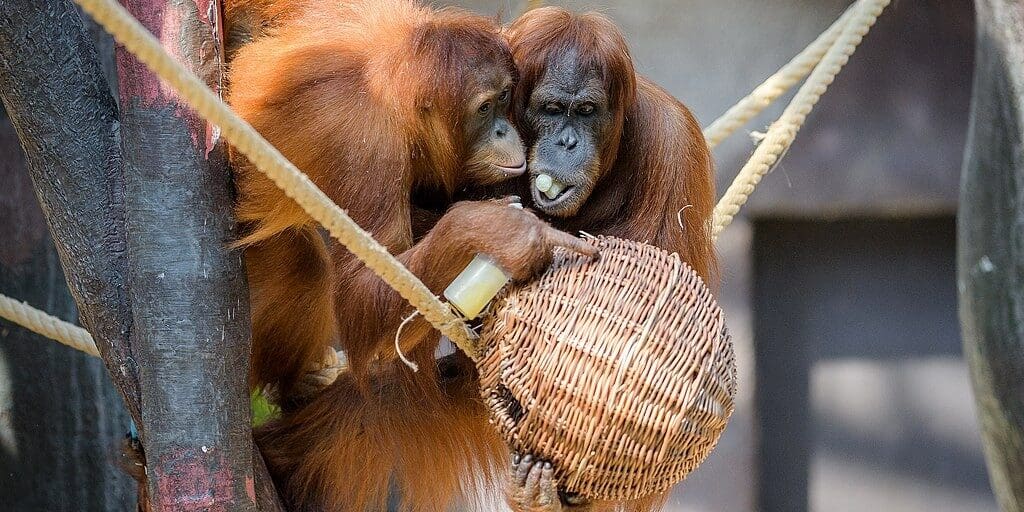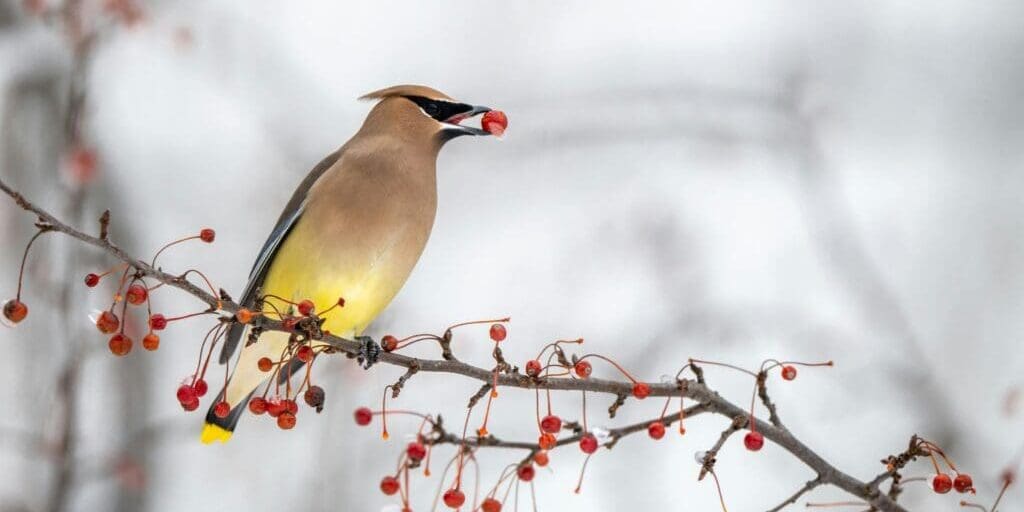News update from Conservation Evidence
This blog post is an overview of what the Conservation Evidence team are working on. We’ve listed some of our recent and ongoing activities. Please follow the links, or contact us, if you want to know more about any of our work.

Awards/Nominations 🏆
We are honoured that Conservation Evidence has been put forward by the University of Cambridge as their single nomination for the Queen’s Anniversary Prize, granted by The Monarch every two years, the highest national honour awarded to UK universities for work showing excellence, innovation, impact and delivering real public benefit!
We are also thrilled that our founder, Professor William Sutherland, was the winner of the 2024 International Cosmos Prize (by The Expo ’90 Foundation, Japan), was awarded the CIEEM Medal (its highest accolade) and was elected a member of the American Philosophical Society and the American Academy of Arts and Science for his lifelong contribution and outstanding achievements in science, conservation and education. Earlier in the year, this was publicised by the University.
Building the evidence base 🏗️
Synthesizing evidence for the Conservation Evidence website and synopses underpins all our other work. We have now reviewed and made accessible evidence for the effectiveness of 3,891 actions for 26 species groups, habitats and other conservation issues.

This year we’ve published synopses on Coral Conservation (also available to buy as a physical book) and Eel Conservation in Inland Habitats. We are currently completing synopses of evidence for the Conservation of Aquatic Vegetation in Inland Habitats (actions reviewed: ca. 190, studies: ca. 450) and Fish Conservation in Inland Habitats focussed on habitat restoration and creation (actions: 26, studies: 226). We’re also collating evidence for kelp conservation (ca. 110 studies), which will be published online in late 2025/early 2026. We have also recently started to update the Bee Conservation synopsis, which was the very first synopsis we ever published back in 2010!

A new process for generating synopses
We are currently transforming the way synopses are produced by the Conservation Evidence team. We are developing new bespoke software to significantly improve efficiency at each of the stages involved in synthesizing evidence to create a synopsis, from inviting and receiving input from the advisory board, to writing summaries and creating the final synopsis document.
Using AI to extract, summarise and interact with evidence 💻
We have been collaborating with the Computer Science Department, including using Dawn, the most powerful UK AI computer, to harness the power of Large Language Models (LLMs) to develop an AI-assisted evidence synthesis pipeline. The goal is to deploy the pipeline to expedite the core work of the conservation evidence project. With the help of the University Library, we have made agreements with the 11 main scientific publishers to access their literature. So far our models have screened about 250 million papers and identified those potentially relevant to Conservation Evidence. The current iteration of our AI pipeline has the ability to more efficiently find and classify studies, and significant steps have also been made to develop its ability to traceably identify and extract key information directly from articles. Work is now expanding to the grey literature and taking the AI-assisted evidence synthesis pipeline into other fields, such as education and economics. We are also working on a Conservation Evidence Chatbot for more intuitive interaction with the Conservation Evidence database to help decision making (Iyer et al. 2025), with a keen focus on reliability and faithfulness.
Considering the impacts of AI for conservation and evidence synthesis
Our horizon scanning exercise identified the opportunities and challenges of using AI in conservation (Reynolds et al. 2025). For our AI work we were awarded one of five AI@Cam awards and are delighted to have generous funding from the Fondation Hans Wilsdorf. The work was recently publicised by the University: Speeding up effective biodiversity conservation and To save nature, AI needs our help. All this work has led to us considering the future of Evidence synthesis in the face of AI more broadly. We published a Comment piece in Nature in which we explore how the publication of ever-larger numbers of problematic papers, including fake ones generated by artificial intelligence, represents an existential crisis for current evidence synthesis methods. However, we believe a combination of AI-assisted subject-wide evidence synthesis and living evidence databases could present a solution.

Evidence-based guidance for practitioners
We view guidance as key to a better integration of evidence in decision-making. However, our work has shown existing guidance is often inadequate as it rarely is transparently based on and related to research and is often outdated or even wrong. In collaboration with Wetlands International, the World Coastal Forum and global practitioners and advisors, last autumn we launched ‘Restoration, creation and management of salt marshes and tidal flats: A collation of evidence-based guidance’, attended online by 425 people from across the globe and now translated into Chinese, Korean and Arabic. We plan to progress this work with collaborators. Read more

Conservation Evidence Toolkit 🔨
Early this year we launched a new interface for our Conservation Evidence Toolkit: a collection of freely available tools and resources, co-designed with practitioners, funders, policymakers and others to support the use and generation of evidence for improved practice. The interface provides easy to use guidance on how each of the tools/resources can be used by organisations in each of the main stages of their conservation projects. Read more

Conservation Testing Lab
We are working on setting up a small Conservation Testing Lab that helps identify, deliver, and maximise the learning from experimental tests of conservation actions. The aim is to create open-access training materials to make it easier for practitioners to embed well-designed tests into conservation practice, and to provide bespoke testing advice on specific projects. The Lab will be developed and run in direct collaboration with funders and practitioners. We are already working with Mossy Earth and the Endangered Landscapes and Seascapes Programme to develop guidance for testing, and with local practitioners (e.g. councils, NGOs) to help them embed well-designed tests (including Kings College, Cambridge).
The Conservation Evidence Journal 📖
We’ve had a busy few months at the Conservation Evidence Journal with more papers published in the first six months of the year than in total in 2024. In January, we published a great example of a straightforward but rigorous test of a conservation action, which found that pollinator abundance increased on urban lawns with a reduced mowing frequency. In February we published the final paper in a series of five, looking at the effectiveness of voluntary transition away from using lead shot for shooting red grouse and pheasants. In spring we published a short communication that tested the effectiveness of a deer repellent to protect coppice regrowth in a nature reserve in Cambridgeshire. In summer we learned that it is possible to boost farm soil health whilst also helping endangered birds by using autumn-sown ‘green crops’. With several more papers currently in review or being revised, keep an eye on the Journal for more evidence on the effects of conservation actions!
Evidence Champion Programme
Over the last year, four additional funder organisations have signed Evidence Champion agreements committing to evidence-based practice: Biodiversity Challenge Fund, Natural Cambridgeshire, The Helvellyn Foundation and Zhilan Foundation.
Essex Wildlife Trust has also signed up, as has Birdlife International by linking each species’ factsheet on the BirdLife DataZone to relevant evidence on Conservation Evidence. Four of our 34 Evidence Champion organisations wrote a blog post: The journey to evidence-based practice. An additional eight organisations are working towards or in the process of applying. If your organisation is interested in becoming an Evidence Champion please get in touch.
We have also continued working with the Wildlife Trusts on the ‘Evidence Emergency’ project to ultimately engage all 47 Trusts with Conservation Evidence, evidence use and generation.

Funders and philanthropists supporting evidence use & generation 💵
We are continually expanding the group of funders and philanthropists who we collaborate with to improve conservation practice. We see funders as critical in encouraging and supporting the use and generation of evidence in conservation. Increasing numbers of funders now ask applicants how they have used evidence to help ensure their projects are likely to be effective; 18 funders published a paper early this year: ‘Approaches for integrating evidence of the effectiveness of actions in conservation funding to inspire more effective practice’. In addition, we have co-authored a submitted manuscript with 26 conservation funders keen to improve the effectiveness of the work they fund through the generation of evidence, which describes 11 approaches for embedding tests, depending on the scale, process, and type of funding.
Framework for invasive alien species management data 👽
We have recently completed a Cambridge Conservation Initiative (CCI) Collaborative Fund project to co-design a centralised repository for compiling and sharing evidence on invasive alien species management actions to support practitioners and policymakers. It will complement (and link to) both conservationevidence.com and metadataset.com. We have designed a preliminary data collation framework and platform, informed by a review of existing databases and input from three interactive workshops involving >70 stakeholders from >30 different countries. We’re currently finalizing the framework for publication, and exploring opportunities to fund future development of the database and online platform.



